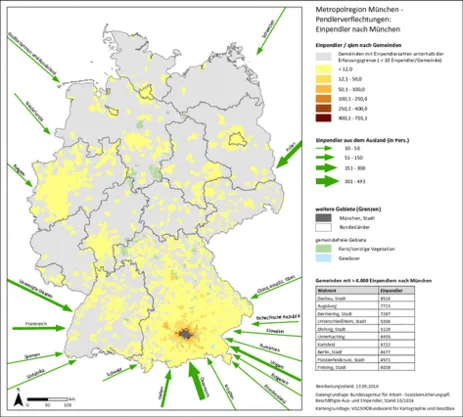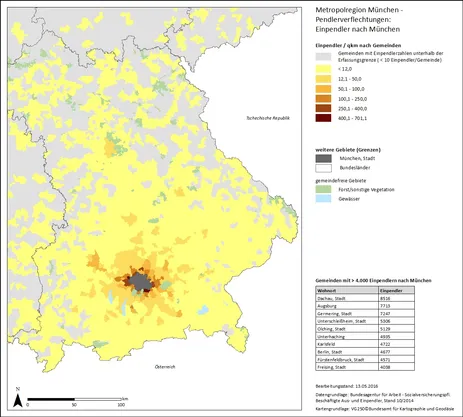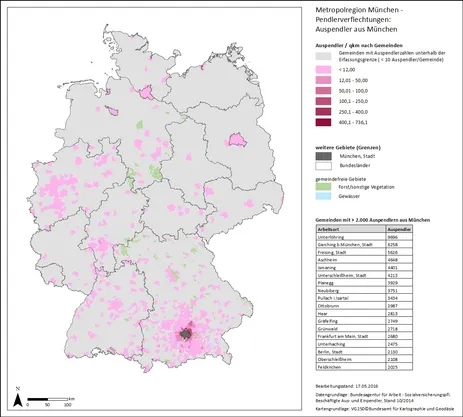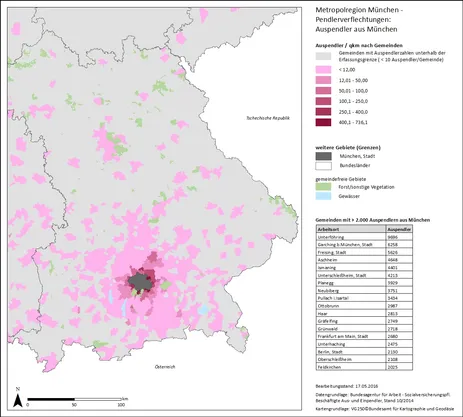Commute Patterns in the Metropolitan Area of Munich
High costs of living and attractive suburbs fuel substantial commute activities in the Munich Metropolitan Area. To delineate the study area for an integrated land use/transportation model for this region, commute patterns at the level of municipalities were analyzed.
The following maps provide a quick introduction from where and where to workers with social security commute in the Metropolitan Area of Munich.
Commuters to Munich
To gain an overview of commuter relations, all municipalities within the Federal Republic of Germany were first considered. Map 1 shows that there are municipalities almost everywhere in Germany from which at least 10 residents regularly commute to work in Munich. The greater the distance, the more likely it is that only those municipalities will be included which, in addition to high population numbers, also have good long-distance transport connections. The regions around Frankfurt, Berlin, Hamburg, Hanover and the Rhine-Ruhr agglomeration can be easily identified. On the North Sea and Baltic Sea coasts, individual cities such as Emden, Bremerhaven, Kiel and Rostock can be identified.
Employees subject to social security contributions also commute to Munich from abroad. While most commuters come from neighboring Austria and Poland, there are also a few from distant countries such as the United States, South Africa and China.
Taking a closer look at the Munich metropolitan area in a second step (Map 2), it becomes apparent, as expected, that the highest numbers of commuters come from nearby municipalities and that the density decreases with distance. The highest commuter densities are found in Ottobrunn, Gröbenzell and Unterhaching, and the highest absolute numbers in the cities of Dachau, Augsburg and Germering. Further away, larger cities such as Nuremberg and Regensburg also stand out.


Commuters from Munich
The situation is similar for employees subject to social insurance contributions who live in Munich and commute to work in other municipalities. Here, too, the municipalities with at least 10 commuters from Munich decrease with distance, so that the agglomerations can be identified (see Map 3). There are significantly fewer municipalities with commuters from Munich than with commuters to Munich, which indicates the importance of Munich as a place of employment. No data are available for commuters to other countries.
The municipalities with the highest densities of outward commuters are Unterföhring, Neubiberg and Ottobrunn, while those with the highest absolute numbers of outward commuters are also Unterföhrung, Garching b. München and Freising (see Map 4).

